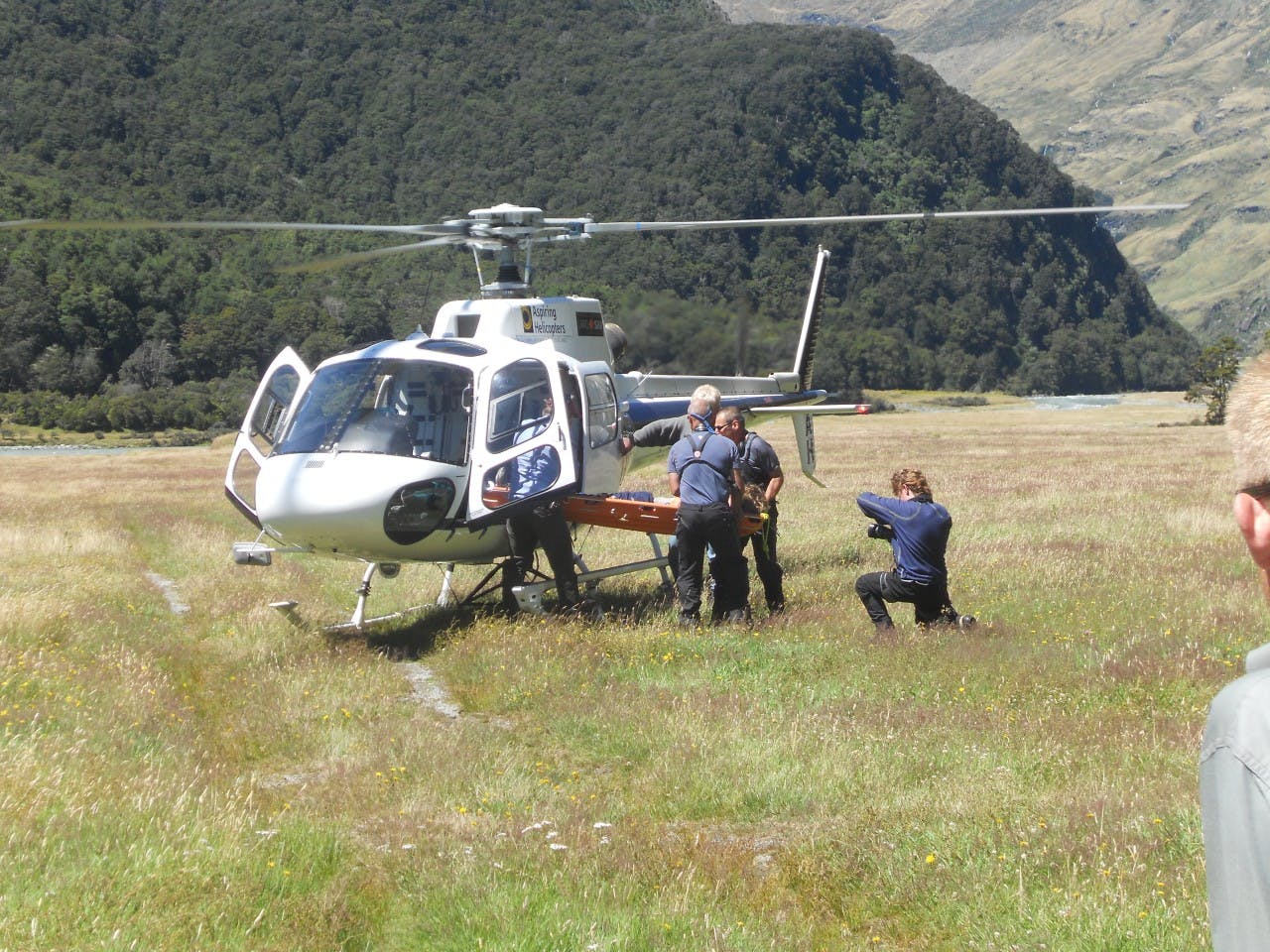Wild Medicine by Mark Woods
Helicopters have become an important part of patient transport over recent years but if you do get a helicopter sent to your aid you’ll need to know some safety procedures.
Weather observations: If you’re in contact with the pilot, they will want an accurate assessment of the weather: what are visibility and wind conditions like? It is important to be specific – helicopters can only operate in good visibility and will not be able to reach you in total cloud cover. They also have a limited capacity to operate at nighttime.
Terrain: Helicopters need around 30m² of reasonably flat ground to land on. If this is not available, look for a prominent rock or something that could be used as a platform for a hover load. Sometimes this is the only option in a river gorge or mountainous terrain. If you have to load the helicopter when it is hovering, do so gently without any sudden moves as this may destabilise the machine.
If none of these options are available, a long-line or winch extraction may be possible, but not all helicopters carry this equipment.
Safety around the helicopter: The most experienced person should be in charge of the group around the helicopter and ensure that:
- All loose items such as hats, gloves, jackets, plastic bags are secured
- The group remains bunched together, low to the ground when the aircraft approaches. Let the machine come to them and wait for a signal from the pilot or crew before approaching the machine.
- Crouch when walking under the rotor – especially when working on sloping ground and you are on the uphill side.
- Only approach from a direction where you are visible to the pilot or crew and never walk around the rear of a helicopter – the tail rotor is extremely hard to see and dangerous.
- Carry all equipment below your waist. It’s amazing how many skis have gone into rotor blades.
Entering the helicopter: The crew will work the doors but if you are required to do this be very gentle with the door operating mechanisms, they are delicate and expensive. If you are forcing the door you are doing it wrong. Put on a headset (if available) to communicate with the pilot and crew.
Plan B: You should always have Plan B in case the helicopter cannot make it for one reason or another.
– Mark Woods is the director of Peak: Outdoor safety and emergency management







